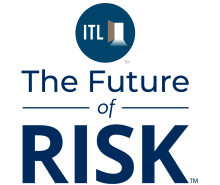The current approach to managing severe convective storm risk is fundamentally flawed. Most models in use today rely on stochastic methodologies designed to evaluate probable maximum loss scenarios but lack the precision to accurately assess average annual losses at the individual property level. This approach does not fully account for how hail damage accumulates over time on roofs. Just as a single cavity cannot be attributed solely to one candy bar, hail damage often results from cumulative effects rather than a single large hailstorm.
This leaves many carriers in a reactive posture, responding to events rather than anticipating them. For example, when a large hailstorm devastates a region, the typical response is to reassess rates across broad geographies—regions, territories, or ZIP codes. This reactive approach not only fails to address the underlying risk effectively but also triggers a cascade of negative consequences.
When the next storm inevitably hits, it targets a different set of properties, repeating the cycle. Losses continue to mount, good risks continue to leave, and carriers are left grappling with rising claims and deteriorating risk portfolios.
See also: Property Insurance Must Evolve for Climate Resilience
The Blunt Instruments of the Past
Some carriers have explored alternative measures, such as mandatory actual cash value (ACV) endorsements for roofs older than a certain age (e.g., 10 years) or exclusions for roof coverage on older properties. While these strategies may help curb immediate losses, they often lack the precision needed to differentiate between well-maintained and poorly maintained properties.
By treating all older roofs the same, regardless of their actual condition or risk profile, these blunt-instrument approaches drive away good risks—policyholders who maintain their properties but find themselves penalized nonetheless. Once again, carriers are left with the worst risks: poorly maintained roofs with limited coverage options elsewhere.
A Better Way Forward: Property-Specific Risk Management
Fortunately, there is a more effective approach: Property-specific risk management. Advanced AI-powered models enable carriers to assess the unique risk profile of each structure, moving beyond proxies like roof age, material, and ZIP code. This approach considers critical factors such as:
- Roof shape and geometry
- The number of roof penetrations (e.g., skylights, vents)
- Roof steepness
- Roof condition
- Roof material and its aging characteristics
AI-powered models uncover critical insights that traditional methods often overlook. For example, claims frequency for asphalt shingle roofs rises exponentially with age, while for metal roofs, the increase is more gradual before leveling off. Similarly, properties exposed to multiple hailstorms see claims frequency double with each event, up to a point where the effect saturates. These nuanced, non-linear relationships are invisible to traditional methods but can be precisely modeled using AI.
Precision Risk Assessment
AI-powered risk assessment transforms how insurers evaluate hail damage risk by analyzing the interaction between the built environment and regional climatology. This approach moves beyond outdated methods that rely on broad groupings, such as ZIP codes and roof age, to assess risk. Instead, each property is evaluated based on its unique characteristics, enabling more accurate underwriting and pricing decisions.
Traditional models often fail to distinguish between good and bad risks within the same territory. AI-driven models, however, leverage vast amounts of property-level data to unlock a level of granularity that conventional methods simply can't achieve. By moving past broad categorizations, insurers can tailor their decisions to the specific attributes of each property, leading to a more precise, fair, and profitable approach to risk assessment.
The results speak for themselves: Insurers using AI-driven models are outperforming their peers, achieving over 60X lift in risk segmentation. This precision not only improves profitability and reduces loss ratios but also ensures fairer premiums for policyholders—delivering value across the entire insurance ecosystem.
See also: What Trump 2.0 Means for Climate Initiatives
Breaking Free From the Cycle
The traditional methods of managing severe convective storm risk are no longer sufficient in an era of increasing storm frequency and severity. Reactive rate adjustments and blunt exclusions are short-term fixes that exacerbate long-term problems. By adopting property-specific risk models powered by AI, carriers can break free from the cycle of rising losses and adverse selection.
This approach doesn't just mitigate losses; it redefines the relationship between carriers and their policyholders. Policyholders with well-maintained properties are rewarded with fair and transparent rates, fostering loyalty and trust. Carriers can provide tailored recommendations, educating policyholders about property maintenance. This makes for a healthier risk pool while improving the overall customer experience.
The path forward is clear: By embracing property-specific, data-driven models, the insurance industry can break the cycle of severe convective storm losses, ensuring a more sustainable future for both carriers and their policyholders.






